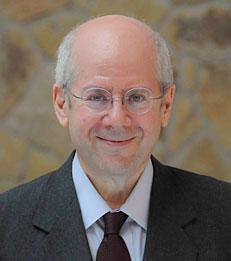Opinion
Financing intangible capital
—


Greater reliance on debt typically makes the financial system more vulnerable.
By Kim Schoenholtz and Stephen Cecchetti
“Because the financier risks losing his money to uncertainty, adverse selection, or moral hazard, he hesitates to lend when the financial infrastructure is not adequate to resolve these problems. But he can still protect himself by requiring collateral-valuable assets that the financier can keep in case the borrower defaults.”
Rajan and Zingales (2003).
When most people think of investment, what comes to mind is the purchase of new equipment and structures. A restaurant might start with construction, and then fill its new building with tables, chairs, stoves, and the like. This is the world of tangible capital.
We still need buildings and machines (and restaurants). But, over the past few decades, the nature of business capital has changed. Much of what firms invest in today – especially the biggest and fastest growing ones – is intangible. This includes software, data, market analysis, scientific research and development (R&D), employee training, organisational design, development of intellectual and entertainment products, mineral exploration, and the like.
In this column, we discuss the implications of this shift for the structure of finance. Tangible capital can serve as collateral, providing lenders with some protection against default (see the quote above). As a result, firms with an abundance of physical assets can finance themselves readily by issuing debt. In contrast, a company that focuses on software development, employee training, or improving the efficiency of its organisation will find it more difficult and costly to borrow, because the resulting assets cannot easily be re-sold. As a result, these businesses rely more on retained earnings or the issuance of equity.
Read the full article as published by VoxEU.
___
Kim Schoenholtz is the Henry Kaufman Professor of the History of Financial Institutions and Markets in the Economics Department and Director of the Center for Global Economy and Business.
Rajan and Zingales (2003).
When most people think of investment, what comes to mind is the purchase of new equipment and structures. A restaurant might start with construction, and then fill its new building with tables, chairs, stoves, and the like. This is the world of tangible capital.
We still need buildings and machines (and restaurants). But, over the past few decades, the nature of business capital has changed. Much of what firms invest in today – especially the biggest and fastest growing ones – is intangible. This includes software, data, market analysis, scientific research and development (R&D), employee training, organisational design, development of intellectual and entertainment products, mineral exploration, and the like.
In this column, we discuss the implications of this shift for the structure of finance. Tangible capital can serve as collateral, providing lenders with some protection against default (see the quote above). As a result, firms with an abundance of physical assets can finance themselves readily by issuing debt. In contrast, a company that focuses on software development, employee training, or improving the efficiency of its organisation will find it more difficult and costly to borrow, because the resulting assets cannot easily be re-sold. As a result, these businesses rely more on retained earnings or the issuance of equity.
Read the full article as published by VoxEU.
___
Kim Schoenholtz is the Henry Kaufman Professor of the History of Financial Institutions and Markets in the Economics Department and Director of the Center for Global Economy and Business.
